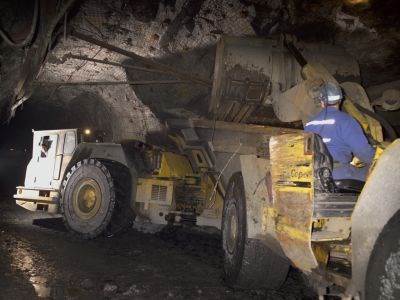Sudbury's future depends on the city's ability to attract immigrants to replace retiring workers, according to a report prepared to help the city update the Official Plan.
“Growth Outlook to 2036,” prepared by Hemson Consulting Ltd., aims to help the city prepare for planning and growth over the next 25 years.
It will help determine updates to the Official Plan, the main document used to guide all planning decisions in the city. The report will go before the planning committee at its next meeting May 27.
The report predicts Sudbury's population will grow past 174,000, an historic peak reached in 1971 before declining employment in the mining industry started a long slide downward that continued until the turn of the century.
In fact, by 2036, the city's population could reach 188,300 if the more optimistic growth scenario holds true.
The report also predicts stable economic and employment growth in the coming quarter century, but says this growth presents a challenge because of Greater Sudbury's demographics.
“One of the key features of Greater Sudbury’s demographics is that there is a disproportionately large population of people between 45 and 65,” the report says. “As these people retire over the next 20 years, there are insufficient numbers of younger people to replace them in the labour force.
“This means that the city will need to attract new migrants of working age just to maintain the current level of employment.”
While Sudbury's reliance on the mining industry has declined over the decades, it's still the largest single employer, with 6,000 jobs tied directly to mining, and another 10,000 in mining-related services. And tied into the recovery of mining is the surging economies in China and India.
“While conditions in the nickel mining industry will no doubt ebb and flow over the coming years as global demand, supply and prices fluctuate, as long as the Chinese and Indian economies continue to grow, there is good reason to anticipate that Sudbury will do so well,” the report concludes.
Tied to economic growth is our ability to replace the large segment of workers who will be retiring over the next 25 years. The projections assume the combination of retiring workers who stay in Sudbury and immigrants coming here to replace them will drive population growth.
The projections also forecast an increasing reliance on international immigration, as opposed to people moving here from other parts of Ontario or Canada. The size of households is also expected to decline, from an average of 2.33 today to 2.18 by 2036.
That's expected to lead to a demand for more condos and apartments, as opposed to the single-detached family homes that have dominated the market for decades.
With so many people retiring, many sectors of the economy will find it difficult to find replacement workers, having a positive effect on unemployment.
“We have forecast a gradual decline in unemployment rates from an estimated 8.5 per cent in 2011 down to a low of about five per cent by the early 2030s,” the report says. “This is consistent with changes expected elsewhere in Ontario.”
Health care, retail, education, local government and home businesses will continue to account for one of every five jobs in Sudbury.
“In Greater Sudbury, this is about one job for every 4.2 persons because health and education services and some commercial services are being provided to a much larger market area than the city itself,” the report concludes.
Major office employment — jobs where everybody works in the same large office building — is a very small category of employment in Sudbury and, along with agriculture jobs, is not anticipated to accommodate a significant share of growth.
What is expected to grow is the number of people working in low-rise, industrial-type buildings, most of which are in within business parks and industrial areas. In Greater Sudbury, it also includes mines and associated processing and transportation activities.
Join Sudbury.com+
- Messages
- Post a Listing
- Your Listings
- Your Profile
- Your Subscriptions
- Your Likes
- Your Business
- Support Local News
- Payment History
Sudbury.com+ members
Already a +member?
Not a +member?
Sign up for a Sudbury.com+ account for instant access to upcoming contests, local offers, auctions and so much more.
